Checkin' Out Czech Republic: Prague, Terezín & Kutna Hora
- Bryan Johnson

- Feb 13, 2024
- 18 min read
After enjoying our time in Nuremberg, Germany, and then a lovely day in the Medieval town of Český Krumlov, Czechia, we were eager to continue our exploration of the Czech Republic.
Friday, February 2, 2024
Cathedral Café
Since our scheduled tour didn't require us to meet until 12:45 pm, Katie and I had some time to walk around and enjoy the city. But first, breakfast at Cathedral Cafe where we enjoyed coffee, chocolate-covered banana pancakes, and a ham & cheese omelet.
Prašná brána
One of the amazing things about Prague is the medieval architecture everywhere; it feels like a fairytale in real life. Just a short three-minute walk from our hotel and along the route to the Old Town Square, is Prašná brána (Powder Gate), one of the thirteen original city gates that was constructed in 1475.
Old Town Square: Staroměstské náměstí
During our morning wanderings, we walked through the Old Town Square; this large historical square has numerous monuments along its edges including the 80-meter-tall Gothic Church of Mother of God before Týn in the southwest corner; the Baroque St. Nicholas Church in the northwest corner; in the northeast corner a statue of Jan Hus, a Czech Christian Reformist who was burned at the stake by the Catholic Church; and to the southwest the Prague Astronomical Clock. Yeah, this is a hoppin' tourist area and we were happy to have some time to explore this famous square!
Prague Astronomical Clock: Pražský orloj
The Prague Astronomical Clock was built in 1410, making it the third-oldest astronomical clock in the world and the oldest still in use. Katie and I saw a crowd beginning to form around the clock, so we joined in the commotion to watch the small show. Here's what we learned about the clock from our walking tour the following day (more on the walking tour later.)
The clock doesn't show the actual time, but the amount of time that has passed since sunset; the clockface also has twelve different horoscopes, representing each month, and shows the waxing and waning of the moon. The clock show has a skeleton ringing the bells, signifying mortality, with the three sinners, Vanity, Greed, and Lust, standing alongside death with Archangel Michael below them. In the two windows above the clockface, the twelve disciples of Christ will make their appearance.
For a clock designed in the 15th century, it was pretty cool to see- even if the show wasn't as detailed as the one in Nuremberg!
Terezín Memorial: Památník Terezín - Malá pevnost / bývalá věznice gestapa
At 12:45 we met up with our tour group and began the journey to Northern Czech to Terezin Memorial. Along the ride, we learned a little about the Nazi occupation of the Czech Republic. In 1938, following the signing of the Munich Agreement, Czechoslovakia gave up control of a large portion of their lands to Germany to prevent war.
Following the beginning of the war in 1939, Germany took full control of Czechoslovakia; Hitler placed one of his most trusted advisors and third highest-ranking Nazi officer in charge of Czechoslovakia. Reinhard Heydrich was given the title of Deputy Protector of Bohemia & Moravia and is most famous for being the mastermind behind the Holocaust. Heydrich converted the town of Terezin into a concentration camp, Jewish ghetto, and political prison because it was already a well-established fortress.
Theresienstadt Concentration Camp: Koncentrační tábor Theresienstadt
The first stop of our tour was at the Theresienstadt Concentration Camp, also known as the "small fortress." This was mainly used as a Nazi Gestapo prison for political opponents and resistance fighters. Nearly 90,000 people went through this concentration camp with 2,600 people dying within its walls during WWII.
This camp was originally a prison and dates back to before WWI. It first became famous with the Assassination of Archduke Franz Ferdinand, heir to the Austro-Hungarian throne, which occurred in Sarajevo, Bosnia and Herzegovina in June 1914. His death directly led to the beginning of WWI; his assassin, Gavrilo Princip was imprisoned at the small fortress in Terezin, where he was kept in a dark, cramped cell in solitary confinement for nearly four years. After years of suffering from malnutrition, he died of tuberculosis in 1918.
This little bit of history shed a dark light over the small fortress's fame for cruel punishment and confinement well before becoming a concentration camp.
During our tour, we went through an area with numerous showers & sinks. Like at many concentration camps, insects and other pests were a significant problem. The Nazis would line up the prisoners where they would drop their clothing inside a steamer and then they would be ushered inside for a cold shower. Following their cold shower, they would be given their clothes where they would put them on, still soaking wet, and be sent back to their cells.
Also, we learned that the room filled with sinks was entirely used for propaganda; the Nazis didn't allow any of the prisoners to use the room, but when the Red Cross would visit the facility or when the Nazis would film the camp, they wanted to make it seem like the prisoners were provided for and were able to keep themselves clean.
Terezin prison is also outfitted with an extensive tunnel system; there are even tunnels that run from the small fortress to the large fortress over a mile away; Katie and I got to explore some of these tunnels as we made our way from one side of the prison to the other.
As we came out of the tunnel, we were brought into the execution grounds. We learned that more than 250 people were executed here with the largest execution (52 people) taking place on May 2, 1945, six days before Terezin was liberated.
Only three prisoners were ever hung at Terezin, after attempting to escape. These hangings were witnessed by all prisoners as a fear tactic and to keep the remaining prisoners in line. The tunnel leading to the execution grounds was known as the "Gate of Death," because when prisoners went through, they never returned.
Just on the other side of the "Gate of Death," was the homes of the guards and their families. Outfitted with numerous apartments, tennis courts, a swimming pool, and a movie theater. It was disgusting for Katie and I to see how the guards and their families lived a life of luxury and were merely separated by a brick wall from people dying of starvation, disease, and execution.
We also learned that due to the horrific living conditions, there was a major typhoid breakout at the small fortress of Terezin; over 600 people died from typhoid after liberation in the spring of 1945.
After touring Terezin's small fortress, we got back on our bus and drove 5 minutes to the Crematorium.
Terezín Crematorium and Jewish Cemetery: Krematorium a Židovský hřbitov
The Terezin Crematorium was built on September 7, 1942 on the opposite side of the large fortress. Due to the large number of deaths in the Jewish Ghetto, the Nazis decided to build a crematorium rather than continue to bury the bodies. The Nazis would burn two bodies at a time in each of the four furnaces inside the crematorium. At the end of the war, diesel was a commodity the Germans had little of, so instead of burning the bodies, they created a mass grave outside of the crematorium, which is today known as the Terezin Jewish Cemetery.
Also located in the crematorium was a small autopsy room, where bodies were examined. Since guards and their families lived so close to the prisoners, autopsies became frequent as more sicknesses spread throughout the camp.
Terezín Ghetto Museum: Terezín Muzeum ghetta
Our next and final stop of the tour was to the Terezin Ghetto Museum. In February 1942, the Nazi government forced the 7,500 citizens of Terezin out of their homes, and by July 1942, nearly 72,000 Jews, gypsies, gay and disabled people were transported to live in the ghetto.
To combat the overcrowding population within the ghetto, the Nazis would ship the Jews to different concentration camps. Terezin is not known for being a traditional concentration camp, but a "transition camp;" nearly 87,000 people were transported to execution camps around central and eastern Europe (like Auschwitz), of which only 3,000 people (of the 87,000) survived.
After a somber few hours learning about the Terezin concentration camp & Jewish ghetto, it was time to make the trip back to Prague for the evening. Visiting Terezin was eye-opening and heartbreaking. While not one of the "famous" camps of Europe, Terezin was unique in that it held one of the largest ghettos across Europe while also containing a concentration camp within the same premise.
Whew. Ok. Deep breath. Now onto less somber topics.
Indian Jewel
Katie and I have yet to find a good Indian restaurant in southern Spain, so of course we make a point to eat it when we travel. As soon as we made it back to Prague, we headed to Indian Jewel where we enjoyed two curries & naan.
Saturday, February 3, 2024
Kolacherie
Today we are spending our time on a guided walking tour around Prague and a medieval Czech dinner this evening. On the way to our meeting point for the walking tour, we stopped at Kolacherie where we grabbed some coffee and a strawberry Kolache, a Czech pastry traditionally filled with fruit and sometimes a sweet cheese. It was amazing!
North Carolina State University, European Center in Prague
As we made our way towards the Charles Bridge, we came across the NC State European Center office, just a minute's walk west of the Old Town Square. Katie and I had to take a moment to put up our wolf signs and grab a picture!
At 10:00 am, we met our tour guide, Ross, where we learned a little bit about the Czech Republic; the Czech Republic is broken up into three regions: Bohemia, Moravia, and Silesia, and has a population of 10.7 million people. The country was combined with Slovakia until the Velvet Divorce on January 1, 1993, when it became an independent nation.
Even though the Czech Republic is in the EU, it still has its own independent currency called the Koruna (pronounced like "crown"); our tour guide said that if they began accepting the Euro, a lot of goods in their country would become overpriced due to the value of the Euro being higher than the value of the Koruna.
Old Town Bridge Tower: Staroměstská mostecká věž
Charles Bridge: Karlův most
The Charles Bridge is a famous landmark in Prague and was constructed in 1357 during the rule of King Charles IV; Charles IV was emperor of the Holy Roman Empire (modern-day France, Belgium, Netherlands, Switzerland, France, Germany, Austria, Czech Republic, Poland, Northern Italy, & Northern Croatia) and placed the seat of his government in Prague. The Charles Bridge is lined by 30 sandstone sculptures that were added during the Baroque Period and the large Gothic Old Town Bridge Tower on the east bank of the Vltava River.
The most famous statue is of John of Nepomuk, the patron saint of Bohemia. According to Czech legend, John was the Confessor of the Queen of Bohemia. The emperor, Wenceslaus IV (son of Charles IV) was a very jealous, distrusting man and ordered John to inform him of his wife's confessions. John refused and was tortured and thrown into the Vltava River off of the Charles Bridge; a few days later, John's drowned body was found upriver by fishermen who claimed that his head was surrounded by five stars forming a halo.
Malá Strana
As we made our way across the bridge, we found ourselves on a set of double stairs overlooking a small plaza. For our Mission Impossible fans, this is where Ethan Hunt stood when the car exploded in the first movie of the series. Stick around for more MI movie stops soon! Clearly Katie was excited to walk down these steps!
Lennon Wall: Lennonova zeď
The Lennon Wall is located in a small plaza in Lesser Town across from the French Embassy and has been decorated with graffiti, poems, and short messages against the Communist regime since the 1960s. It received its name after the assassination of the famous singer and songwriter from the Beatles. We learned that the Beatles were a symbol of freedom and Western culture during the communist regime in Czechia, and after his death, this wall became a visual setting for free expression.
Pamětní deska Ludwiga van Beethovena
Located just a few minutes walk up the street from the Lennon Wall is the Palace Beethoven Apartment. Beethoven, a frequent visitor of Prague, is rumored to have written many of his world-famous symphonies while in this apartment.
Prague Castle: Pražský hrad
Perched on top of a hill overlooking Lesser Town & the Vltava River is Prague Castle, the largest medieval castle in the world. The Prague Castle takes up a landmass of 750,000 square feet and is home to the office of the President of the Czech Republic.
Check out this video of the Changing of the Guard Ceremony; Ross knew exactly where we should stand to get a great video!
St. Vitus Cathedral: Katedrála Sv. Víta
St. Vitus Cathedral is a large gothic-style church within the grounds of the castle and was constructed in 1344. It is the home of the Bohemian Crown Jewels, which only come on display on very rare occasions!
St. George's Basilica: Bazilika svatého Jiří
St. George's Basilica is a Romanesque-style church, also within the grounds of the castle, and is the oldest surviving church in the Czech Republic having been constructed in 920.
Svatováclavská vinice
After leaving the castle grounds, Ross took us to a great overlook of the city at Svatováclavská vinice (St. Wenceslas Vineyard), the oldest vineyard in the Czech Republic (farmed since the 10th Century.)
Faculty of Arts: Filozofická fakulta Univerzity Karlovy
After making our way down the hill, we crossed the Vltava River heading back towards Old Town. We took a short break at the Charles University Faculty of Arts Building; Charles University was founded in 1348 by Charles IV and is the oldest university in Central Europe.
This building is also home to the first and only mass shooting in the Czech's history. On December 21, 2023, a Charles University postgraduate student opened fire from the roof of the Faculty of Arts Building, killing 14 and injuring 22. There is still a large place of remembrance with many flowers and candles outside of the building.
Katie and I remember this shooting in December; we were concerned that we may have to postpone our trip. Our guide explained the chaos and fear that ran through every Czech citizen on that day.
Pinkas Synagogue: Pinkasova Synagoga
As we made our way back towards the Old Town Square, we walked through the Jewish Quarter where we learned that the Star of David, the symbol of the Jewish people and Judaism, was first adopted as the official symbol of the Jews, in Prague, in the 17th Century.
Franz Kafka Memorial: Rodný dům Franze Kafky
Our last stop before lunch was the Franz Kafka Memorial; Kafka was a German-speaking Czech Jew known for his 20th-century literary works The Metamorphosis and The Trial; I had no idea who this guy was but Katie had read The Metamorphosis while at State. Apparently its about a man who turns into a giant cockroach...she doesn't recommend it. But hey, we got to see where he was born!
Staroměstská restaurace
Finally, it was time for lunch! We had lunch alongside the rest of our tour-mates at Staroměstská restaurace, where Katie enjoyed the sirloin in cream sauce and I had the beef goulash! It was nice having a few minutes to rest our legs and warm up before heading back out to finish our tour!
Prague Venice Boat Trip
After quickly watching another clock show at the Astronomical Clock and learning all about it (I touched on this a bit earlier), we headed back to our starting point near the Charles Bridge and said goodbye to our fantastic tour guide, Ross! This was easily one of the best walking tours Katie and I have done and we cannot recommend this enough! If you're ever in Prague, check out the Best of Prague Walking Tour, and be sure to ask for Ross! Better yet, text Katie and she will send you the booking link! Best. Tour. Ever.
Before parting ways with Ross, he dropped us off at the Prague Venice Boat Trip where we were given some hot wine and gingerbread before we set off! Although this was also included in our tour, Katie and I don't think this was entirely necessary; Ross did such a great job with his tour that everything they were telling us on the boat, we had already learned from him!
Church of Our Lady before Týn: Chrám Matky Boží před Týnem
Before heading back to the hotel to hang out for a couple of hours, we decided to check out some of the art vendors on Charles Bridge; Ross informed us that everyone selling something on Charles Bridge has to have an official license from the city, so you know their stuff is legit.
Katie and I have been collecting watercolors during some of our trips abroad, so when we found an awesome painting of the Charles Bridge, we had to jump on it! After checking out the bridge, we headed back to the hotel and grabbed some beautiful pictures of the Old Town Square lit up at night!
Urinating Sculptures: Čůrající postavy
After taking a small detour (scenic route,) we ran across some Urinating Sculptures, so of course Katie wanted me to pose so she, and other passersby, could have a good laugh.
Come on people, its called ART.
Krčma U Pavouka
After an hour of relaxing at the hotel, we showed up at 7:45 to U Pavouka, a medieval dinner and show experience. Unfortunately, this did not live up to the hype. Katie and I shared a table with a lovely German/Polish couple who spoke excellent English, but the food was average, at best, and the performance made both Katie and I uncomfortable. We were expecting more live music, fire breathing, and snake whispering, but instead, we got a bunch of middle-aged women belly dancing. If we could do it again, we would definitely not have booked this, especially given the price we paid!
The only plus to this dinner was the German/Polish couple we sat with. They were in Prague celebrating the wife's birthday and they were so much fun to talk with! Katie and I left the dinner wishing we knew another language besides JUST English. We are always impressed with bilingual people and it's a skill we wish we had too!
Here's a little taste of the performance:
Sunday, February 4, 2024
café 11
For our last full day in the Czech Republic, we wanted to find another breakfast/brunch place before our scheduled tour to Kutna Hora in the eastern part of the country. Katie had some of the best French Toast we've ever had, while I got the savory pancakes. Although my savory pancakes were delicious, Katie's breakfast was definitely the winner!
At 12:30, we were picked up from our hotel and began the one-hour-fifteen-minute drive to Kutna Hora!
Sedlec Ossuary: Kostnice Sedlec
We arrived in Kutna Hora, and our first stop was the Sedlec Ossuary. This Ossuary is located beneath the Church of All Saints in Kutna Hora. Construction for the church began around 1400 and during construction, approximately 40,000-70,000 bodies were exhumed from a mass grave from the Black Plague and the Hussite Wars.
In 1511, the task of using the skeletal remains of all those bodies to create art was assigned to a half-blind monk. These remains were used for wall decorations and four large skeleton pyramids in the four corners of the chapel. Katie and I thought this was cool, but after having seen the Capuchin Crypts in Rome, we found this to be a little less impressive than if we hadn't already seen crazy skeleton decorations under a church.
Also, what's up with monks decorating basements with bones?! Nobody thought that was weird? I guess we can't say much since we bought tickets to see it. Twice.
For anyone wondering, yes, there were signs saying "no pictures," but my wife is not one to listen. Plus, you wouldn't believe what we saw unless there was visual proof. (Or at least that was her excuse when I told her to stop!)
Cathedral of Assumption of Our Lady and St. John the Baptist: Katedrála Nanebevzetí Panny Marie a sv. Jana Křtitele
Our next part of the tour was the Cathedral of Assumption of Our Lady and St. John the Baptist; wow, what a name. Could you imagine being a kid and someone asking you where you went to church?! This ended up being just another big Gothic church, but inside were relics of St. Felix (no idea who that is) that were gifted to the church by a Pope whose name I didn't catch.
Anyway, now was about the time when Katie and I started to grow indifferent about visiting churches, similar to the way we felt about temples and shrines in Japan. Unless its a very unique, stand-apart shrine/church/cathedral, they all start to look the same. With incredibly similar architecture, made from similar materials, and named after a Saint we likely haven't heard of, they all start to blend in our memory! It doesn't help that our tour guide was this elderly lady who was clearly working off of a script; if you asked her any questions, she would just repeat the same things over and over again.
Don't get us wrong, we do appreciate the beauty though!
St Barbara's Cathedral: Chrám svaté Barbory
Okay, our next stop...you'll never guess! Another Gothic Cathedral! This at least had a pretty cool-looking exterior with three flame-shaped domes and an interesting exoskeleton that provided support to the thin walls! Katie and I's new favorite thing to look at inside these old churches are the pulpits; they're pretty intricate and all quite unique!
We also loved the wall paintings, specifically the two photos just above: one of a very handsome horse that resembled Fabio and one of a strange-looking camel that resembled the Grinch. (See, this is what happens when you visit 3 churches in one day. You start seeing things in the murals!)
Cafe Lavande
After leaving the church, we walked into town for some photos and about thirty minutes worth of free time; since we didn't have much time to eat or do much else, Katie and I grabbed a local beer at Cafe Lavande. It was nice to sit and enjoy our local beer- literally brewed right around the corner here in Kunta Hora! I was also very proud of Katie for drinking all of her beer without my help, since she isn't a big beer drinker!
We also wouldn't recommend this tour for the following reasons:
the Ossuary didn't provide a unique experience for us.
We've now grown bored of Gothic Cathedrals.
Our tour guide wasn't very knowledgeable, except for what was on her script!
Overall, we were happy to spend this last full day out of the city, seeing more of the Czech countryside and small towns.
"K" - The Two Brothers
We made it back into Prague around 6:30 pm and, still craving Indian food, we made our way to "K" The Two Brothers for some great curry & naan! And this food was GOOD. We left very full and ready for a night of deep sleep!
Monday, February 5, 2024
The Spot
The following morning we woke up, checked out of our hotel, and stored our bags in the luggage closet in the hotel's lobby. We made our way to The Spot where Katie had shakshuka (a Greek dish made with tomatoes, onions, peppers, and eggs that I had on our trip to London for New Year's) and I enjoyed the French Toast. We have got to learn how to make shakshuka at home- it has become a must-order when we see it on a menu! Katie's French toast from the day before was definitely better, but both of our meals were still very good!
Statue of John of Nepomuk
After breakfast, we set out to find filming locations from the first Mission Impossible movie. As we crossed the Charles Bridge, we made sure to stop by the statue of John of Nepomuk and rub the plaque of the dog! You can probably tell from the picture that rubbing the dog at this statue is pretty popular, given the gold shine; the dog is supposed to represent loyalty, and legend has it, that if you rub the dog, you'll end up visiting Prague again! Since Katie and I have really enjoyed this trip, we would of course love to come back in the future!
On the Western side of Prague, in Lesser Town, we found numerous MI filming sites, including where Ethan stopped to watch the car explode in the parking lot and where he found Sarah stabbed through the gate.
I even decided to give it my best go at doing a Tom Cruise run along the Vltava River!
Embassy of the United States: Velvyslanectví USA
As we continued to wander around the city, going into souvenir shops, we happened to run across the American Embassy!
J.J. Murphy's Irish Pub
Just up the street from the Embassy was J.J. Murphy's Irish Pub. Katie and I are a sucker for an Irish pub! After enjoying a couple of pints of Guinness for me and Magner's Cider for Katie, we made the 25-minute walk back to the hotel to grab our luggage.
Flixbus Stop Prague
We made it to our bus stop 30 minutes before departure because we weren't going to take any risks of missing it! Fortunately, this bus's journey was beginning in Prague, so it was already there by the time we arrived. We checked in and grabbed front-row seats on the second level of the double-decker bus. This was a first for us: riding on a double-decker bus (especially on the front row) had us on edge as we went under the first few bridges!
When we crossed the border into Germany, our bus was stopped for a random check; German police checked every single passenger's passport. The police were incredibly thorough, looking through every single page of Kate and I's passports, studying every single visa stamp. I may have held my breath during this passport check, but all was well and eventually, we continued back to Nuremberg!
Premier Inn Nuernberg City Nordost Hotel
We made it to the city center a few minutes after 8:00 pm! After a short subway trip, we checked into our hotel, Premier Inn Nuremberg for a final night's rest.
Tuesday, February 6, 2024
Tuesday morning came early as we woke up at 4:00 am to catch the 4:53 am subway to the airport. We made it through security in time to make our 6:00 am flight! We landed in Sevilla at 9:00 am and were in the car ready to get home to our puppies!
Normally this is where we share cute pictures of Hugo and Reynolds from our dogsitter, but the trip isn't over yet!
Unfortunately, Spanish farmers had another plan for us. Just a few miles south of the Jerez Airport, about 30 minutes away from our house, we were stopped by a blockade of tractors and protesting farmers.
Spanish farmers have been blocking roads all over the country protesting against high taxes and restrictive environmental laws. Katie and I spent over four hours at a complete stop on the highway.
OVER. FOUR. HOURS.
For the first hour, it wasn't a big deal. Katie read her book while enjoying the sun coming through our open sunroof. By hour two, I had read all the sports updates that I had missed over the last week. By hours three and four we were over it. Eventually, the Spanish National Police arrived and cars were able to go through a narrow opening!
At 3:30 pm, we finally made it home (even though we were supposed to be home at 10:50 am!) We were greeted by two precious dogs, who were well cared for by our dog sitter, Jessi, while we were gone! (There it is- your puppy update!)
Thanks for following along with us as we visited two new countries! We had a spectacular time in Nuremberg, Germany & the Czech Republic and can't wait for more upcoming adventures! Stay tuned for more coming soon!
Na zdraví! (Cheers in Czech!)
Bryan

































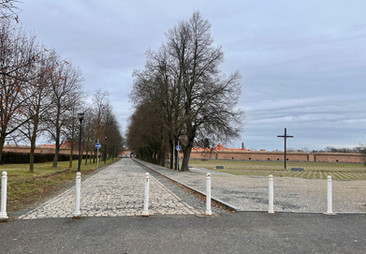































































































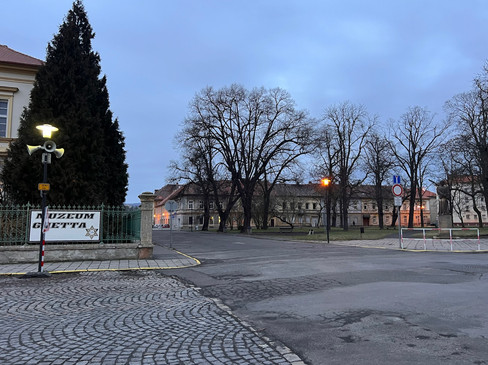









































































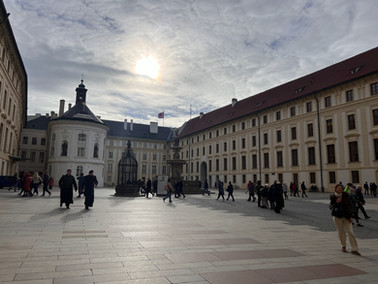























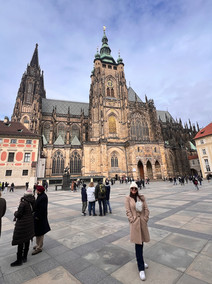





























































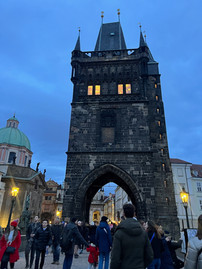















































































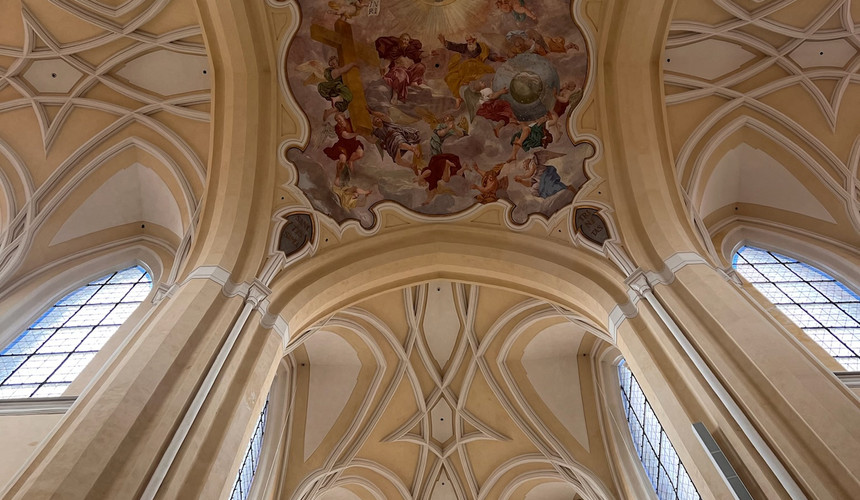


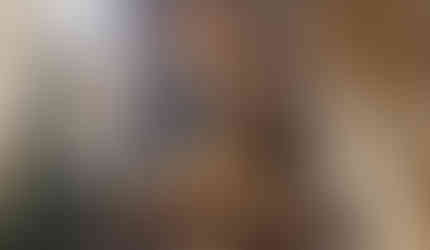







































































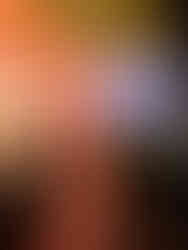










































































































Comments